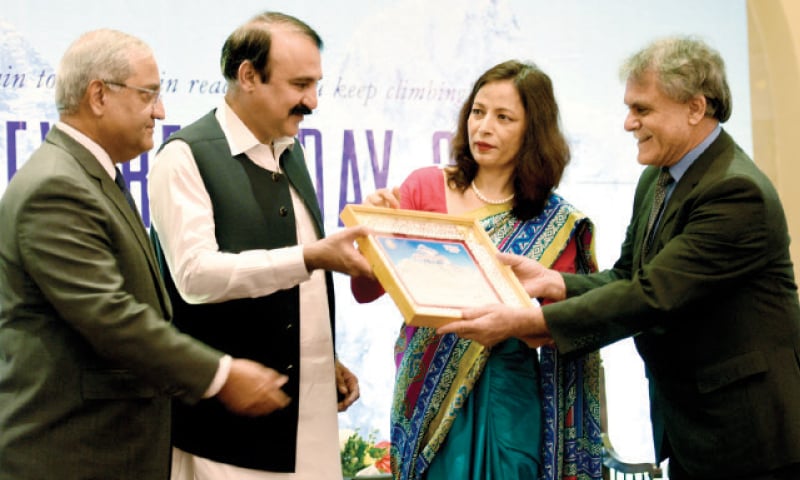ISLAMABAD: Historically and narratively, mountains have often served as insurmountable obstacles and natural borders between people and nations. But at a seminar organised by the Embassy of Nepal and Serena Hotel on Monday to mark Mount Everest Day, Pakistani mountaineer Nazir Sabir spoke about the world’s highest mountain as a connector rather than a divider.
Known as Sagarmatha in Nepal, Mount Everest was first summited by Nepali sherpa Tenzing Norgay and New Zealander Sir Edmund Hillary on May 29, 1953. May 29 is celebrated as Mount Everest Day to mark the achievement.
Mr Sabir, who was the first Pakistani to summit Mount Everest, said at the event that the Himalayan mountain range connects these countries and regions spiritually.
He said he had been lucky to visit Nepal around 15 times, and while a lot of people call the relations between Nepal and Pakistan “higher than the Himalayas”, he said: “But I would [say] the relationship between Nepal and Pakistan is much deeper, because of the spiritual connectivity starting from Bhutan in the eastern and western end of the Himalayas and Nanga Parbat.”
He said that to him, the mountains were the most beautiful things created by the creator and struggling up a mountain is “a kind of pilgrimage”. “In my own case, I connect with the creator far more often than in a prayer place,” he added.
He said that when he led the first Pakistani expedition organised by the Alpine Club of Pakistan, they attempted to summit Everest from the north side. “We failed to get the summit three times, and after three attempts came back,” he said. He then returned to Everest in 2000 as part of an expedition led by the late Christine Boskoff, an American mountaineer.
“As I was reaching the summit, I had cold feet, and I thought I had frostbite. I increased the oxygen and my feet got warmer. This was my sixth attempt - three attempts from the north side and three attempts from the south side. I was so close and yet I was not sure until I put the last step on the summit.”
Mr Sabir also said he was proud of his “little sister” Samina Baig, the first Pakistani woman to summit Everest, who hailed from a village near his in the Hunza valley.
Ambassador of Nepal Sewa Lamsal Adhikari, in her address, congratulated Abdul Jabbar Bhatti, who just this month became the fourth Pakistani to summit Mount Everest and who, she said, is awaiting an official certificate of his achievement.
“Till now, more than 4,000 climbers from different countries made more than 7,000 summits,” she said.
Ms Adhikari said that in addition to representing glory and beauty, in Nepal mountains are central to people’s lives and are even worshipped. “Most importantly, mountains are reservoirs of water to the billions of people across the world. At the same time, mountains are victims of the negative effects of climate change. Snow-capped mountains are gradually turning into black mountains.”
She said that climate change is impacting not only the scenic beauty of mountains but also tourism and ecosystems. The drastically changing weather pattern is affecting mountains and valleys and the lives and livelihoods of people in the mountains. She expressed the hope that this would initiate collective efforts on the part of Nepal and Pakistan “to protect mountains and mountaineering as well as tourism in collaboration with all the stakeholders and relevant partners”.
At the start of the seminar, an appreciation award for the three official Pakistani summiteers of Mount Everest - Mr Sabir, Ms Baig and the late Hassan Sadpara - was presented to Mr Sabir.
Published in Dawn, May 30th, 2017
















































Dear visitor, the comments section is undergoing an overhaul and will return soon.